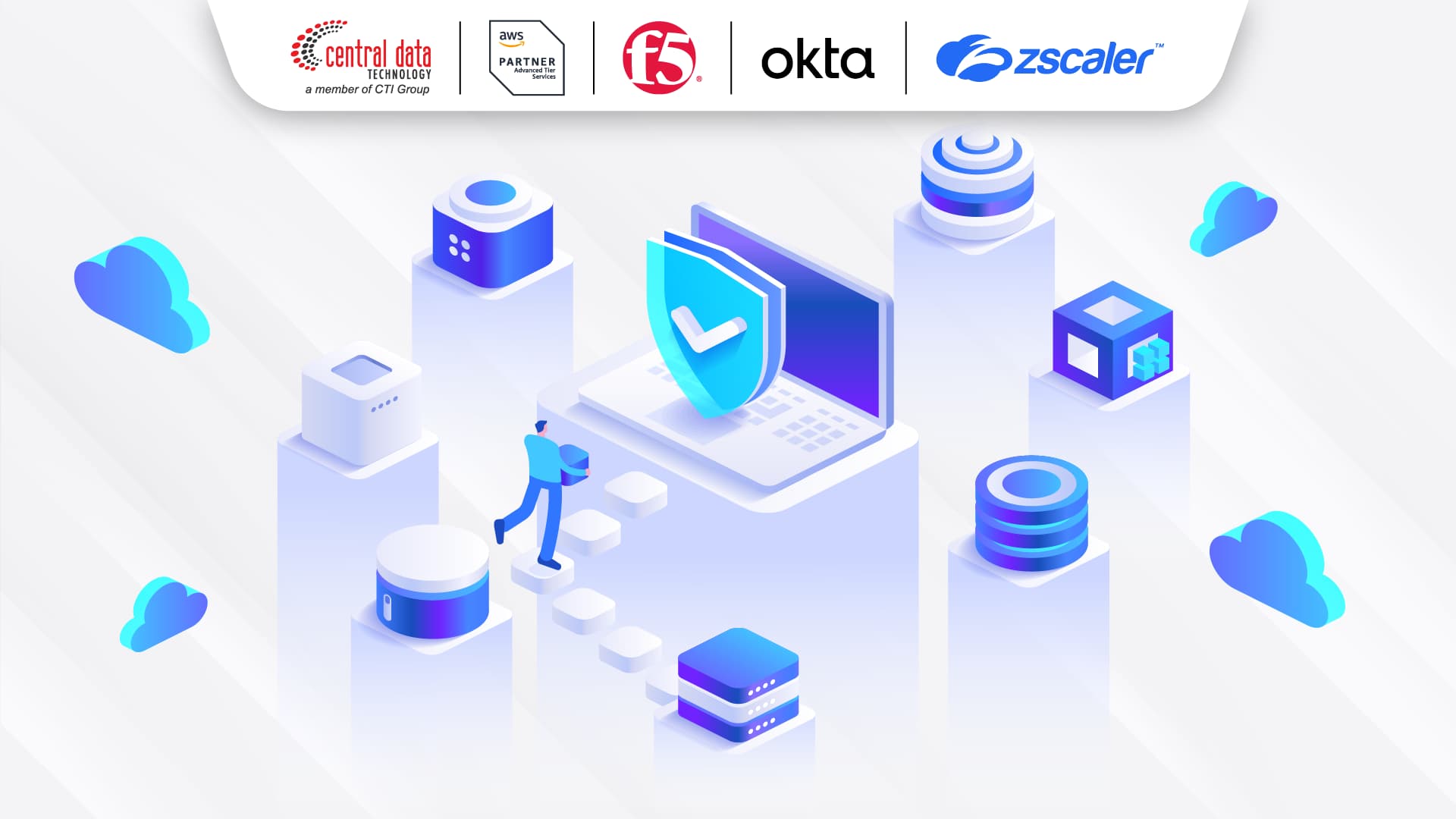
Network security management is no longer a choice—it’s a business imperative. According to IBM’s 2023 Cost of a Data Breach Report, the average global cost of a data breach has reached USD 4.45 million, with network-based attacks remaining a primary cause. These risks now impact every level of business—from large enterprises to startups and SMEs.
Furthermore, Cybersecurity Ventures projects that global cybercrime damages could escalate to USD 10.5 trillion annually by 2025. This is a staggering figure—and the only effective way to confront this growing threat is with a robust and integrated network security management system.
What is Network Security Management?

Network security management is the process of comprehensively managing, monitoring, and securing an organization’s network infrastructure against both internal and external threats. This process involves overseeing various components such as firewalls, VPNs, intrusion prevention systems (IPS), as well as enforcing user access policies and monitoring network traffic in real time.
The primary objective of network security management is to serve as the first line of defense—preventing unauthorized access, enabling early detection of cyber threats, and facilitating rapid response to incidents without disrupting business operations. This solution includes the automation of security device configurations, firmware updates, and compliance reporting to ensure the stability, integrity, and confidentiality of the corporate network.
Problems Network Security Management Address
Network Security Management (NSM) addresses several key challenges in managing modern network security. One of the most common issues is the increasing complexity of IT infrastructure—particularly due to the adoption of cloud services, IoT devices, and hybrid work environments.
NSM unifies security management across these diverse environments, breaking down operational silos and simplifying coordination and incident response. Additionally, it overcomes the lack of visibility and control over network traffic, which can be exploited by attackers to infiltrate systems undetected.
By leveraging real-time monitoring, NSM enables IT teams to detect suspicious activity early, preventing it from escalating into major security incidents. It also helps mitigate the impact of limited human resources through automation and system integration, reducing reliance on manual processes that are prone to error.
Moreover, Network Security Management supports organizations in meeting compliance and audit requirements, such as GDPR or ISO 27001, by providing centralized logging, reporting, and policy enforcement.
How Network Security Management Works?
Network Security Management works by integrating various security components—including firewalls, VPNs, intrusion prevention systems (IPS), endpoint protection, and monitoring tools—into a centralized platform. This unified interface allows network administrators to manage security policies, monitor network activity, and respond to threats from a single, consistent, and efficient console.
One of its key features is policy automation and incident response, enabling the system to automatically detect and mitigate potential threats without direct human intervention. NSM also collects and analyzes data from multiple points across the network, providing analytics-driven insights that support more informed security decision-making.
By adopting a Zero Trust model, NSM ensures that no device or user is granted default access. Every connection must first be verified, reducing the risk of data breaches and unauthorized intrusions. This approach also supports multi-vendor security orchestration, making it highly adaptable for various IT architectures.
Read More: Business Needs Software Automation: Here’s Why!
Key Advantages of Network Security Management

Network Security Management delivers strategic advantages for organizations seeking to strengthen their overall security posture. One of its primary benefits is the simplification of security operations, where policies, devices, and control points are managed centrally through an intuitive dashboard—enhancing IT security team efficiency.
Additionally, NSM significantly improves real-time threat response, enabling early detection of attacks and reducing recovery time. Its ability to automate routine security tasks, such as policy updates and incident handling, helps lower operational overhead while increasing consistency and response speed.
Moreover, NSM offers high flexibility, making it suitable for businesses of all sizes with on-premises, cloud, or hybrid infrastructures. With detailed reporting capabilities, it also streamlines compliance management and facilitates more efficient security audits.
Start Your Network Security Management Investment with CDT
Now is the time to secure your business systems and data from increasingly sophisticated cyber threats with end-to-end solutions from AWS, F5, Okta, and Zscaler, brought to you by Central Data Technology (CDT).
AWS Security Hub
AWS Security Hub offers an automated, centralized platform for managing cloud network security. It aggregates and standardizes security findings across AWS accounts and partner services, enabling continuous compliance monitoring and anomaly detection across cloud-based infrastructure.
This essential solution helps modern businesses monitor compliance in real time, detect misconfigurations and anomalies, and automatically respond to threats to minimize incident recovery time. AWS Security Hub also delivers comprehensive security posture visualization and includes features such as compliance checks, alert management, automated remediation, and security cost optimization.
F5 BIG-IP Advanced Firewall Manager
F5 BIG-IP Advanced Firewall Manager is a next-generation firewall solution that performs deep inspection on every inbound connection, including SSL/TLS decryption and protocol-level application inspection. Backed by a dynamic threat signature engine and hardware acceleration, F5 mitigates complex threats in real time without compromising network performance.
F5 BIG-IP Advanced Firewall Manager comes equipped with powerful features:
- Network Firewall: Controls access to applications using industry-standard, firewall-based rules to protect against unauthorized connections.
- DoS/DDoS Protection: Continuously monitors and mitigates denial-of-service (DoS) and distributed denial-of-service (DDoS) attacks, preventing performance degradation or complete application outages.
- IP Intelligence: Allows or restricts access to the data center based on trusted or malicious IP reputation lists, enabling more precise and adaptive threat response.
- Reporting: Delivers detailed graphical reports on attack patterns and network threats, empowering users to identify early indicators of future attacks and strengthen their overall security posture.
It also provides deep visibility into data centers and ensures high network availability with high-volume logging, SSH channel protection, S/Gi firewall capabilities for service providers, and flexible defense mechanisms against advanced cyber threats—making it ideal for core infrastructure protection.
Okta Single Sign On
Okta delivers Single Sign-On (SSO) and Multi-Factor Authentication (MFA) for secure, centralized authentication across thousands of applications with one-click access and context-aware security policies. With SSO and MFA in place, Okta significantly reduces the risks of phishing and credential misuse while simplifying access control and compliance reporting.
Okta helps lower ticket volume by up to 75%, improving the user experience. It also integrates seamlessly with AD/LDAP, VPNs, and on-prem systems. Key features like adaptive authentication, support for over 7,000 app integrations, a centralized admin dashboard, and full directory and device integration make Okta a powerful foundation for Zero Trust security.
Zscaler ZIA & ZPA
Zscaler offers comprehensive cloud-native network security by unifying firewall, Secure Web Gateway (SWG), Intrusion Prevention System (IPS), sandboxing, Data Loss Prevention (DLP), and URL/DNS filtering into a scalable cloud service. Unlike traditional models that route traffic through on-prem data centers, Zscaler securely processes traffic through a globally distributed cloud network—minimizing latency and maximizing efficiency.
Through Zscaler Internet Access (ZIA) and Zscaler Private Access (ZPA), organizations can secure access to both internet and internal applications without relying on traditional hardware. With Zscaler Digital Experience (ZDX), IT teams can monitor network performance in real time to ensure an optimal user experience. This approach enables centralized, scalable, and more efficient network management.
Get Your Network Security Management Solution Only at CDT
Central Data Technology (CDT) as part of CTI Group, offers a comprehensive portfolio of network security management solutions from AWS, Okta, F5, and Zscaler to protect your business systems and data from cyber threats. Now is the time to ensure every activity, device, and connection within your business network is fully secure.
Contact CDT team by clicking this link to start your consultation and let us help you implement the right network security management strategy for your business.
Author: Ervina Anggraini – CTI Group Content Writer

